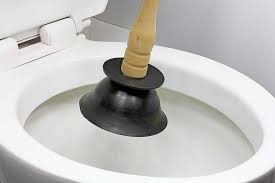Dealing with a toilet that always clogs can be frustrating and inconvenient. Whether it’s a recurring issue or a sudden problem, understanding the causes and solutions can save you time, money, and stress. In this article, we’ll explore why your toilet might be clogging frequently and provide practical steps to fix and prevent it.Common Causes of a Toilet Always CloggingSeveral factors can contribute to a toilet that clogs often. Identifying the root cause is the first step toward solving the problem. Here are some common reasons:
- Excessive Toilet Paper: Using too much toilet paper at once can overwhelm the drain pipes, leading to clogs.
- Non-Flushable Items: Flushing items like wipes, feminine hygiene products, or paper towels can cause blockages.
- Low-Flow Toilets: Older low-flow toilets may not have enough flushing power to clear waste effectively.
- Pipe Issues: Narrow or damaged pipes can restrict water flow, making clogs more likely.
- Mineral Buildup: Hard water can leave mineral deposits in pipes, reducing their diameter over time.
How to Fix a Toilet That Always ClogsIf your toilet is constantly clogging, try these solutions to resolve the issue:
- Use a Plunger: A plunger is the first tool to try. Ensure you create a tight seal and use vigorous up-and-down motions to dislodge the clog.
- Try a Toilet Auger: If the plunger doesn’t work, a toilet auger (or snake) can reach deeper into the pipes to break up or retrieve the blockage.
- Check the Water Level: Low water in the tank can result in weak flushes. Adjust the float valve to increase the water level.
- Clean the Jets: Mineral deposits can clog the flush jets under the rim. Use a wire hanger or vinegar soak to clear them.
- Inspect the Pipes: If clogs persist, there may be a deeper issue in the sewer line. A professional plumber can inspect and clear the pipes.
Preventing Future ClogsOnce you’ve resolved the immediate issue, take these steps to prevent future clogs:
- Limit Toilet Paper: Use only as much toilet paper as necessary, and consider flushing twice if needed.
- Dispose of Non-Flushables Properly: Keep a trash bin nearby for items that shouldn’t be flushed.
- Upgrade Your Toilet: If you have an older low-flow model, consider replacing it with a high-efficiency toilet.
- Regular Maintenance: Periodically clean the toilet jets and pipes to prevent buildup.
- Educate Household Members: Ensure everyone in your home knows what can and cannot be flushed.
When to Call a ProfessionalWhile many clogs can be handled DIY, some situations require professional help:
- Recurring Clogs: If the toilet clogs frequently despite your efforts, there may be a deeper plumbing issue.
- Multiple Clogged Fixtures: If sinks or showers are also backing up, the sewer line may be blocked.
- Slow Draining: Persistent slow drainage could indicate a partial blockage or pipe damage.
ConclusionA toilet that always clogging is more than just an annoyance—it can signal underlying plumbing problems. By understanding the causes, using the right tools to clear clogs, and adopting preventive measures, you can keep your toilet functioning smoothly. If the problem persists, don’t hesitate to call a plumber to avoid more serious damage.

